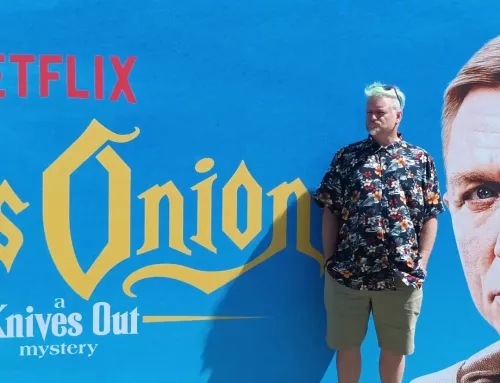these poems do not
let themselves be written without
lifting lids
and disturbing the dead
these poems are hauntings
they could not live without bringing
buried things back
ghosts out of silence
bearing witness
these poems exist between worlds
written out of mist and prayers
and last breaths
these poems have no respect for the living
these poems are part of what remains of
missing names
these poems can never be a full story
there are desperate poems elsewhere
dying to be said
these poems might be the only evidence
that we were here
And with these haunting words, lids were lifted and the dead began to be raised as we sat forward in our chairs to lean into the spirit-shaking, heart-searing performance of We Are Dying Here by the supremely talented Siphokazi Jonas, Hope Netshivhambe and Babalwa Makwetu.

An Entanglement of Styles
Not quite a spoken word gig but with words spoken, not quite a poetry reading but with words put to rhythm, not quite a musical but with music, We Are Dying Here moves and glides and soars and dives all over the place as it refuses to be contained in a single genre.
This production will not be boxed. Just as these women with powerful voices and stories and expression refuse to sit back and do nothing when faced with the seemingly insurmountable tsunami of male violence that rushes like a wave to meet them and women like them.
A show of expression. Of expressing. Of groaning. Of feeling weighed down by the immense pressure and forcefulness of the violence that is inflicted through word and act and system and silence.
An exposure of the oppression found in the lives of women and in the daily lived experiences of male and patriarchal violence in a variety of ways as well as the silencing of voices in response to the inflicted pain.

My response
We Are Dying Here is a difficult and uncomfortable piece to watch. Because of how true i know it to be. True in terms of the lived experiences of the women on stage and some stories they have borrowed from loved ones. True in terms of how it was echoed back to them afterwards in a beautiful space they created for debrief and reflection. True in terms of friends and family members i know who deeply resonate and relate to the words that flew at us from the stage in all too frequent experience. True in terms of what i witness on social media and sometimes see on the streets around me.
The hardest part of watching We Are Dying Here is probably the feeling that i am watching with the choir. As i look around the room, the women outnumber the men. And it’s not to say the men who were there are not in need of work and change and rehabilitation [because we definitely are] but that those who really need to see and hear this pulsating message are not likely to voluntarily step into this cauldron.
i say ‘cauldron’ and yet one of the standout features of this production was an absence of swearing and a sense of out-of-control rage in a context that feels most suited for it. Rather it is the cleverness of the words or the deep messages woven into piercing metaphors that bring the message home so clearly:
The men she has loved throw stones
Baptised in black and blue paint
At stained windows
They are not be satisfied until things rubble
Their love makes things crumble
Between mosaics of accusations and apologies
She is diminished, disfigured
a cathedral of shards.
It is the words that are doing the punching here, blow by blow they land on the ears and hearts of the audience members, fighting to make themselves heard. And understood.
Abuse trades in currencies of silence
We are all too willing to
Drape Pandora’s box in bandages until she is mum
Tongues embalmed to emulate speech
But the private stink is always on the brink
Of unravelling false sympathies
Passed around cremated pews
with the zeal of an offering plate
The church as an institution that has been known for violence in many ways, shapes and forms, especially against women, receives due attention through many of the pieces as a lamentation of mourning the spaces that were meant to be safe but proved otherwise.

We Are Dying Here has so many things that work for it. Repetition is one of them. A line that hits you, hits you again, and then a third time and just when you think you are done, it strikes once more, refusing to let you escape.
One line that struck me with brute force, knowing some small measure of what women face when simply walking on the streets:
Every step taken by a woman in the streets is a prayer to not be seen
Especially when followed in succession by:
Every prayer made by a woman in the streets is a question to God
Every breath taken by a woman upon her arrival is a sigh of relief
Before moving towards an ending of:
a sigh of ‘I made it alive, in one piece…today, I hope tomorrow is the same, I hope to be invisible, to not make a sound, to not bother a man, to not bother his demons, to not attract his demons, NO! To not bother him, to not attract him, it’s him!
as if it is not safe to have us living whole, happy, unafraid, at peace
What will it take for him to stop,
As if we are a challenge to be conquered.
What will it take for men to stop
That could be the tagline for We Are Dying Here: What will it take for men to stop?
And we don’t receive an answer.
There is no happy ending moment of hope descending rainbow of colour.
The women end the production wearing the same garbage bag clothes they started it in.
The questions and damning statements remain on pages stuck to the walls and on the floor to be stepped over as you leave the theatre.
During the Debriefing Space that they graciously offered to the audience directly after the show Siphokazi quotes Craig Stewart who often speaks about the need to remain in the discomfort of disequilibrium and this is where we are left. No answers, but a clear calling for the commitment required to finally get serious about the need to be doing more about this. Audience members were given a chance to share how their stories connected with the words spoken and sung from stage and to express gratitude and resonance.
This was the ending that we needed. To be able to sit with the pain and darkness and hopelessness of a country that treats women so violently. That the very sitting in that space and moment will grab hold of your very soul and convince you of the absolute need to refuse to be silent and uninvolved.

We Are Dying Here: An Epilogue
The biggest shout-out to Siphokazi, Hope and Babalwa for an incredible lived experience, a piece that felt like it was delivered with a personal cost.
Thank you for giving of yourselves and creating something that really brings the message home. We Are Dying Here will be seen in Joburg in the new year, but we need to do everything we can to help bring it back to Cape Town and send it around the country. We need to find a way to get this in front of more men with the invitation to see ourselves and all that we represent. It should not be the women who are wearing the trash bags here one feels.
There was no weak moment of We Are Dying Here. No advice i could give, no room for improvement. Every single beat falls as it must and does the work it sets out to do. But it was the Epilogue piece that drew attention to hashtags and social media justice that was one of the most hard-hitting highlight pieces for me, and i will end with this…
Thanks for the hashtag, but
there’s no time to tweet
between taxi rank, construction site, and street.
Only clutch your bag to your body
Your body to yourself
Yourself to this thought
please-don’t-talk-to-me
please-don’t-talk-to-me
please-don’t-talk-to-me
please-don’t-talk-to-me
Thanks for the hashtag, but
there’s no time to tweet
in the boardroom or by the photocopy machine.
Power pinches the purse strings, and
Makes you puppet –
Everybody knows
The puppet master’s hands like to slip below the neck
Below the hem,
below the waist.
But the show must go on, so
The audience claps. And claps. And claps its way to a 13th cheque.
Thanks for the hashtag, but
there’s no time to tweet
in vestry or confession booth.
Scriptures are interpreted behind smoke-screens,
between a collar and a robe.
The pulpit is now a bookshelf of bodies, and
God was cast out a long time ago to make space:
“And the spirit of silence descended on them like tongues of fire.
Their tongues were on fire, and no one said anything. They swallowed the ash.”
Thanks for the hashtag, but
there is no time to tweet
in parliament or court.
We’re in the business of cooking laws
To serve justice to the vulnerable!
First, a few questions to prove your innocence:
Did you say NO?
Do your clothes say NO?
Your values, your virtues, your life?
How long have you lived as a NO?
We put it to the court, that when you said NO (or couldn’t say it at all), you really meant YES!
We submit, Your Honour, that what matters is not what she says,
it is what he believes he heard.
Thanks for the hashtag, but
There’s no time to tweet
There’s no network here
Data is expensive here
How do you explain Twitter here? Or a hashtag for that matter?
My aunt, my cousin, my grandmother don’t speak English here.
There’s no time to tweet here
The police ask what I did to deserve it here
The docket is for sale here
They family wants to solve this as a family here
They pay damages to make things right here
The lecturer fails you here
The principal is king here
The prophet is father here
The breadwinner must not be questioned here
The bread must not be endangered here
The neighbours mind their own business here
They say I’ll ruin the family here
They say bekezela here
They say “don’t try be clever” here
They say they’ll teach me a lesson here
They say they want to “fix” me here
They say “smile” here.
The trend is #wearedyinghere.
[Photo credit for top three pictures goes to Yunus Le Chat]
[For men asking, ‘But What Can I do?’ here are some ways to get started]






![The Road to the Catan World Champs in Malta 2022! [Part II]](https://brettfish.co.za/wp-content/uploads/2022/11/IMG_9944-scaled-e1669831201283-500x383.jpg)
Gosh! Gut punching poetry. And every other line I could relate to personally. You have written beautifully, thanks Brett. More, more. I don’t want to die here.
Thanks Candice, the beautifully written poetry is all Siphokazi and crew so make sure you check them out next time they do a run here which they hopefully will in 2020…
What are your views on some of these topics like homosexuality, abortion, her body her choice etc? I did read five of your articles, but seems you haven’t addressed this in some time, so not sure. I have a gay brother and this time of year always brings tension.
Gary
Thanks Gary. i find topics like abortion and homosexuality quite polarising and so prefer to have those face to face over a drink or a meal. It’s an easy way to get hate [whichever way you write] from people on either extreme and so because of their usually sensitive nature have typically decided to not give them a lot of airtime on here.
The easy basic response is that as a follower of Jesus the call is to love people making the decisions you would and those making the decisions you are against so when it comes to the “God hates…” mentality that’s an easy one to speak out against. But loving people should never be a question… for the rest, i prefer a face to face…
Hello Sir,
I have heard soon we will be gymming as a country. Nationalization of gyms like Virgin is now a thing. Do you know discovery is R5000? If you have no money you risk at hospices like groot schuur. Now sir, what is your public opinion on Healthcare and gyms to be nationalized? Also more gyms in the beach. Like Venice California. Tony
i have not heard anything about that but if there was a way that we were all freely gymming together as a country i think that could only be a really good thing. Although the greater likelihood is that this will benefit the wealthy and those with access already and somehow shny those who already can’t afford to go… But imagine the possibilities if everyone had access to free gymming? Although one has to take into consideration time which wealthier people seem to have more of than poorer people because of how much longer things generally take for the poor [transport, access…]